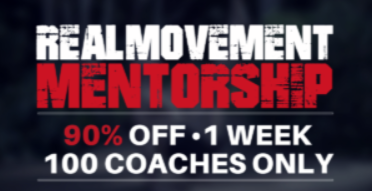Is Juggernaut Method 2.0 for you?
As a coach I’m always interested to see how other people are training. What their motivations are and the differences and similarities between what they do and what other coaches do. I’ve always loved to learn and read and I’m sure that’s one of the reasons why I’ve seen the level of results that I have.
Even so I never really wanted to read Juggernaut Method 2.0. I thought it would be a spin-off or similar version to Jim Wendler’s 5-3-1 program which is one of the most used programs in the world today.
I downloaded it on a whim in a moment of post-workout depletion, thinking I’ll read it one day on a train or a plane. The method itself is pretty simple and 5-3-1-ish but uses a 10-8-5-3 rep-range with max reps on the last sets and a few different variations for how to get to the target set for the week.
A few interesting changes from Wendler's 5-3-1 are:
- Different preparation for the max set with 4 weeks at each of the 10+, 8+, 5+ and 3+
- The weight for the next 4 week block is based on your performance in the 3rd week of the previous block.
- There are a lot more working sets than 5-3-1 on the key lift.
- RPE by 3-0 reps in the bag changing from week to week.
- A much bigger focus on fitting gym work around on field training.
One of the things I don’t like is only training each movement once / week. All my personal bests hae come on the back of higher frequency training. Practice what you want to get better at. There is a different option later in the book with more frequency but it’s not the fundamental method that Smith uses..
The best part about the Juggernaut Method 2.0 was the inverted version which the author now uses in preference to his original method. It results in the same total volume but with lots more sets, less reps per set, shorter rests, the same level of intensity (moderate if you go to 10x3 rather than 3x10 with the same weight).
The decision to invert sets was one I made to improve the quality of training and strength gains last year. The realisation resulted in DenseSTRENGTH blocks. The blocks are multiples of 5 minutes for 5-50 reps for each block. With this method I was able to reach personal best levels on Snatch, Front Squat, Deadlift, Cleans, Planche progressions, Front Levers and more! You can probably guess why I've stuck with the method! If you'd like to train with this method join the RealMOVEMENT Global Community.
[I originally described this concept as the Timed Progress Method, which then morphed into ‘Dense Strength’.]
Beyond the actual Juggernaut Method for strength development the book is a great introduction to programming for performance in real world training environments for athletes (people who have to do more than just gym training).
Chad Wesley Smith talks logically and through experience about scheduling conditioning, speed work and power development together with strength and the differences between planning for junior athletes versus developed athletes.
For those who work with teams and athletes or who have aspirations to checking out these plans will be worth your time.
CONCLUSION
Overall a very thorough book worth investing in for coaches focussed on athlete development and programming around multiple demands. It would also be worth a read for CrossFit coaches.
If you’d like support with your training go to Real MOVEMENT Project Global Community where there is a training session for you everyday as well as support for your performance questions.
If you’re a performance coach looking to work in professional sports or open your own facility check out the UPCOMING Real MOVEMENT training camps and seminars.


